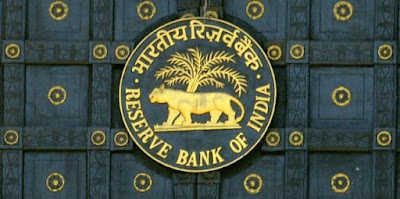Bond yields fall to the lowest in 32 months
 |
| The 10-year yield opened at 7.488% and touched a low of 7.477%, a level last seen on 11 July 2013. Photo: Pradeep Gaur/Mint |
Mumbai: If the bond markets can be unforgiving when faced with poor fiscal and economic policies, it can be equally gracious to a fiscally and economically prudent approach.
The sharp fall in bond yields since the budget and the change in mood in the bond markets vindicates this. Traders, who were sulking in fear of a slippage in fiscal deficit targets, are now feeling some spring cheer in the hope that the government decision to remain on the path of fiscal consolidation will be backed by at least a 25 basis point (bps) cut in rates by the Reserve Bank of India (RBI). Some are even expecting a 50 bps cut. One basis point is 0.01%.
The government’s decision to cut small savings rate on Friday—a decision that many thought was too politically difficult to take—has only added to the excitement in the air. The government also announced its borrowing plan on Friday, which held no surprises.
In response, this morning the benchmark 10-year bond yield has fallen to a 32-month low.
The 10-year yield opened at 7.488% and touched a low of 7.477%, a level last seen on 11 July 2013. At 9.30am, the 10-year yield was trading at 7.478%, down from its Friday’s close of 7.52%. Since 26 February, the Friday before the budget, the bond yield has fallen by over 30 bps.
“Post-budget cheer in bonds is likely to get further short-term boost as the government recalibrated small savings rates, essentially passing the baton to the RBI. We expect benchmark 10-year yield to remain around 7.4-7.6% in 1HFY17 as the market appears to have already priced in at least 25 bps rate cut in the coming months. We pencil in 50 bps rate cuts in CY2016,” wrote Madhavi Arora, economist at Kotak Economic Research, in a note on Saturday.
Indranil Pan, chief economist at IDFC Bank, agreed with that view.
“The government’s gross and net borrowings in H1FY17 are projected at Rs.3.55 trillion and Rs.2.48 trillion, respectively. The net borrowing is 14% higher than H1FY16 due to higher redemptions in H1FY16 at Rs.1.3 trillion compared with Rs.1.07 trillion in H1FY17. Net borrowing in April and May is Rs.164 billion and Rs.540 billion, respectively, compared with Rs.480 billion and Rs.771 billion during the same months in the previous year. In addition to this, with the government reducing small savings rates across the spectrum, the interest rates offered by commercial banks should also head lower. Hence, we now see 10-year benchmark yield coming off to 7.25-7.50% in FY17, compared with our earlier range of 7.35-7.55%,” said Pan in his note on Saturday.
Given the pace of the rally in bond markets, a note of caution is warranted.
A section of the market seems to be expecting either a 50 bps cut from the RBI in its April policy or at least a far more dovish tone than the RBI has so far maintained.
A reminder to this section of the market that while the RBI may take comfort from the fiscal discipline shown by the government, inflation indicators will remain prime to its interest rate policy. In this context, it is important to remember that while inflation in the past year has undershot the RBI’s targets, the central bank will now be setting policies keeping its goal of bringing inflation down to 5% by March 2017.
Given that the benefits from lower global commodity prices are already in the inflation data and that the system has the impact of the pay commission to deal with, the RBI may continue to tread with its customary caution.












